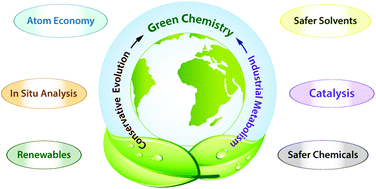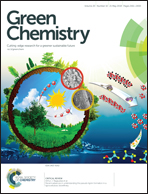Conservative evolution and industrial metabolism in Green Chemistry†
Abstract
To date, chemistry has provided more than a hundred million new compounds, most of which are non-natural species that have never existed before and are a source of an enormous amount of pollution. With the increased amount of these “man-made” chemicals being synthesised and environmental concerns of chemical processes, chemists have become very aware of these potential risks and dangers. As an answer to this challenge, Green Chemistry emerged and brought with it a list of necessary measures to be followed in the laboratory that has been gradually completed. Herein, we present evidence for the manifestation of two related principles within Green Chemistry: (i) conservative evolution, which refers to the observation that throughout the history of the universe, old construction blocks, such as elementary particles, amino acids, or living cells remained conserved while the world evolved in its complexity, and (ii) the practice of industrial metabolism that is a manifestation of conservative evolution in human activity referring to the application of biological metabolism in the production of goods for our civilization. Related concepts of Green Chemistry, such as the atom economy, as a metric of green chemistry, the application of safer chemicals and solvents, the utilization of catalysis, the utilization of renewable resources, and in situ spectroscopy, are discussed, providing examples to students and researchers from academy to industry involving the work of Professor István T. Horváth.

- This article is part of the themed collection: 2018 Green Chemistry Hot Articles


 Please wait while we load your content...
Please wait while we load your content...